#history pictures
Explore tagged Tumblr posts
Text
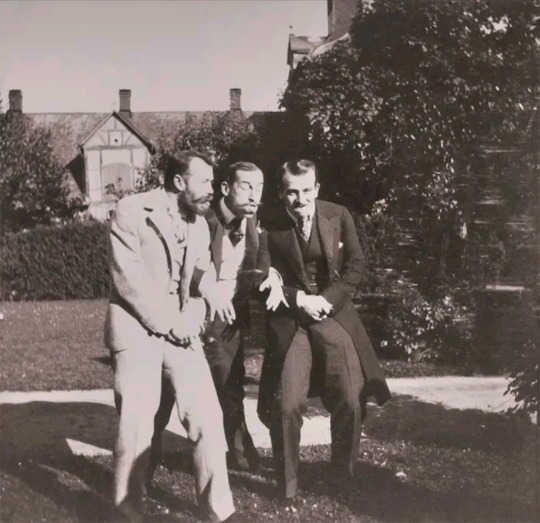

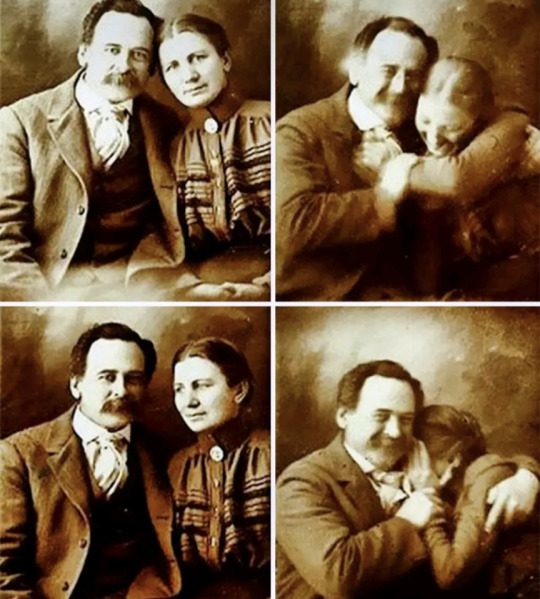

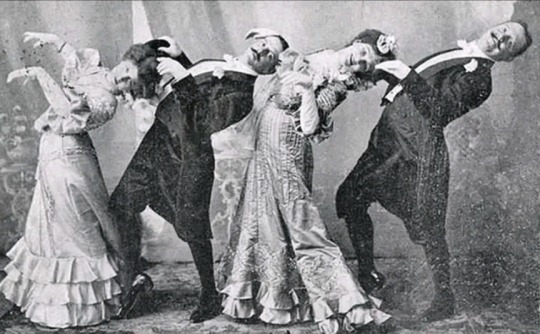
Photos of people in the Victorian era goofing around
#history#humanity#history funny#history facts#history pictures#beautiful photos#old photos#old picture#photography#victorian#victorian era#humans being humans#goofing around
262 notes
·
View notes
Text

Dorothy McKibbin (left) had an office at 109 East Palace Avenue in Santa Fe, New Mexico. There, she should greet new arrivals to the Manhattan Project and send them on their way to the Secret City. She became known as the “gatekeeper to Los Alamos” and came to know Oppenheimer quite well. “I never met a person with a magnetism that hit you so fast and so completely,” McKibbin once said of Oppenheimer. “I knew anything he was connected with would be alive.”
The source for the photo is here
#oppenheimer#oppenheimer 2023#robert oppenheimer#j robert oppenheimer#los alamos#pictures#history pictures
9 notes
·
View notes
Text






..as autumn bleeds into winter...
...Goodbye November...
@luciferslilith7
#aesthetic#dark academia#chaotic academia#classic academia#classic literature#light academia#the secret history#donna tartt#the goldfinch#gloomy coquette#edgar allan poe#escapism#franz kafka#fyodor dostoevsky#white nights#dark academia moodboard#autumn aesthetic#late november#winter academia#henry winter#if we were villains#the dead poets society#dark romantica#books and poetry#books and coffee#Sylvia Plath#hans christian andersen#the picture of dorian gray#brown aesthetic#black & brown
5K notes
·
View notes
Text
What does life in North Korea look like outside of Pyongyang? 🇰🇵
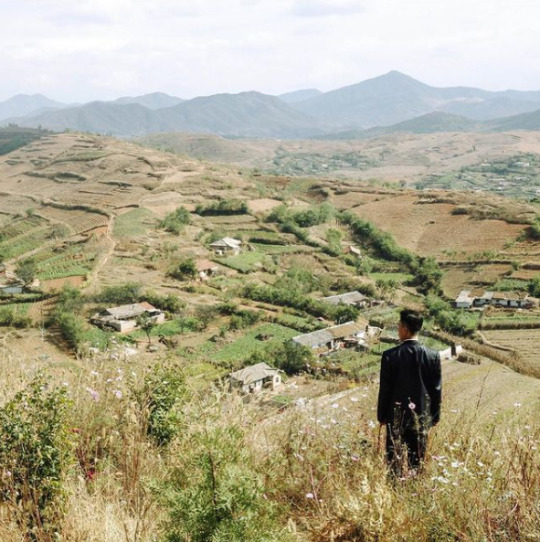
Hey, I'm back again with a very scary "tankie" post that asks you to think of North Koreans as people, and to consider their country not as a cartoonish dystopia, but as a nation that, like any other place on earth, has culture, traditions, and history.
Below is a collection of pictures from various cities and places in North Korea, along with a brief dive into some of the historical events that informs life in the so-called "hermit kingdom."
Warning: very long post
Kaesong, the historic city
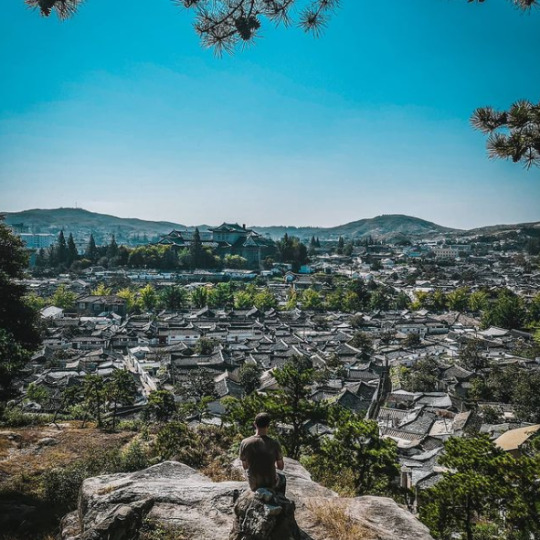
Beginning this post with Kaesong, one of the oldest cities in Korea. It's also one of the few major cities in the DPRK (i.e. "North Korea") that was not completely destroyed during the Korean war.
Every single city you'll see from this point on were victims of intense aerial bombardments from the U.S. and its allies, and had to be either partially or completely rebuilt after the war.
From 1951 to 1953, during what has now become known as the "forgotten war" in the West, the U.S. dropped 635,000 tons of bombs over Korea — most of it in the North, and on civilian population centers. An additional 32,000 tons of napalm was also deployed, engulfing whole cities in fire and inflicting people with horrific burns:
For such a simple thing to make, napalm had horrific human consequences. A bit of liquid fire, a sort of jellied gasoline, napalm clung to human skin on contact and melted off the flesh. Witnesses to napalm's impact described eyelids so burned they could not be shut and flesh that looked like "swollen, raw meat." - PBS
Ever wondered why North Koreans seem to hate the U.S so much? Well...
Keep in mind that only a few years prior to this, the U.S. had, as the first and only country in the world, used the atomic bomb as a weapon of war. Consider, too, the proximity between Japan and Korea — both geographically and as an "Other" in the Western imagination.
As the war dragged on, and it became clear the U.S. and its allies would not "win" in any conventional sense, the fear that the U.S. would resort to nuclear weapons again loomed large, adding another frightening dimension to the war that can probably go a long way in explaining the DPRK's later obsession with acquiring their own nuclear bomb.
But even without the use of nuclear weapons, the indiscriminate attack on civilians, particularly from U.S. saturation bombings, was still horrific:
"The number of Korean dead, injured or missing by war’s end approached three million, ten percent of the overall population. The majority of those killed were in the North, which had half of the population of the South; although the DPRK does not have official figures, possibly twelve to fifteen percent of the population was killed in the war, a figure close to or surpassing the proportion of Soviet citizens killed in World War II" - Charles K. Armstrong
On top of the loss of life, there's also the material damage. By the end of the war, the U.S. Air Force had, by its own estimations, destroyed somewhere around 85% of all buildings in the DPRK, leaving most cities in complete ruin. There are even stories of U.S. bombers dropping their loads into the ocean because they couldn't find any visible targets to bomb.
What you'll see below of Kaesong, then, provides both a rare glimpse of what life in North Korea looked like before the war, and a reminder of what was destroyed.
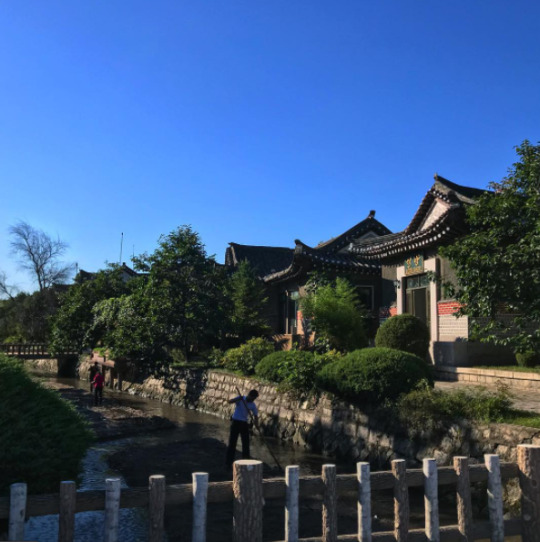
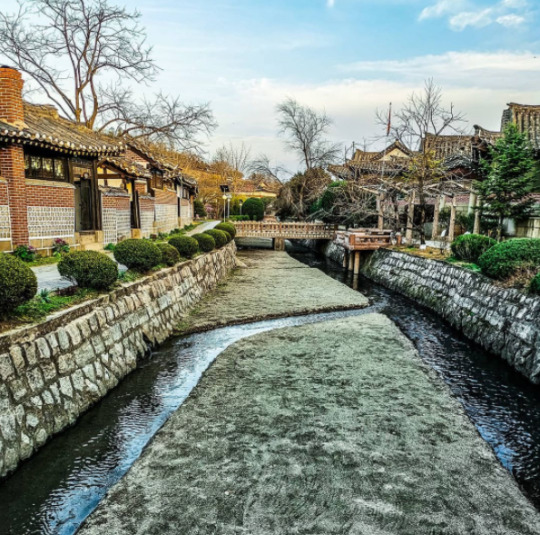
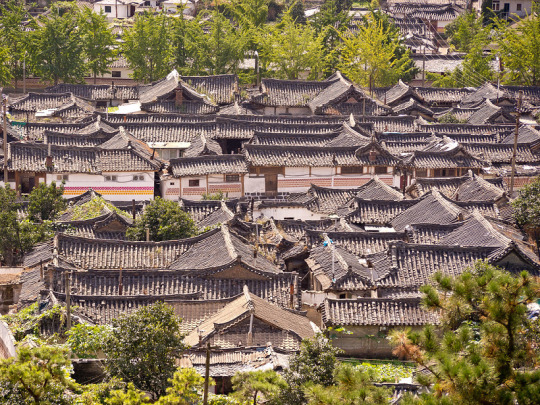
Kaesong's main street, pictured below.
Due the stifling sanctions imposed on the DPRK—which has, in various forms and intensities, been in effect since the 1950s—car ownership is still low throughout the country, with most people getting around either by walking or biking, or by bus or train for longer distances.
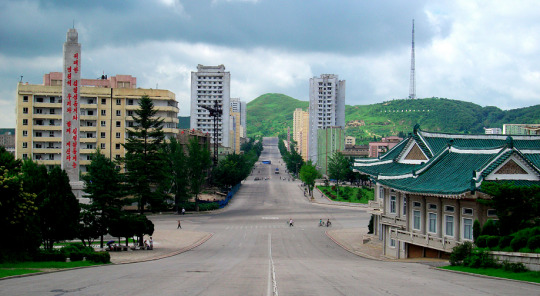
Kaesong, which is regarded as an educational center, is also notable for its many Koryŏ-era monuments. A group of twelve such sites were granted UNESCO world heritage status in 2013.
Included is the Hyonjongnung Royal Tomb, a 14th-century mausoleum located just outside the city of Kaesong.
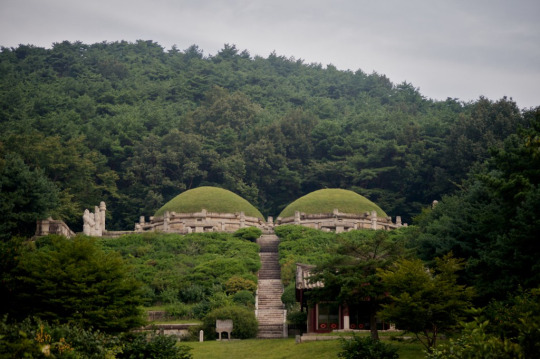
One of the statues guarding the tomb.

Before moving on the other cities, I also wanted to showcase one more of the DPRK's historical sites: Pohyonsa, a thousand-year-old Buddhist temple complex located in the Myohyang Mountains.
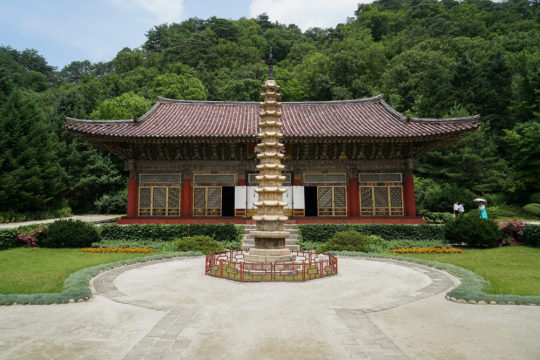
Like many of DPRK's historic sites, the temple complex suffered extensive damage during the Korean war, with the U.S. led bombings destroying over half of its 24 pre-war buildings.
The complex has since been restored and is in use today both as a residence for Buddhist monks, and as a historic site open to visitors.


Hamhung, the second largest city in the DPRK.
A coastal city located in the South Hamgyŏng Province. It has long served as a major industrial hub in the DPRK, and has one of the largest and busiest ports in the country.
Hamhung, like most of the coastal cities in the DPRK, was hit particularly hard during the war. Through relentless aerial bombardments, the US and its allies destroyed somewhere around 80-90% percent of all buildings, roads, and other infrastructure in the city.
Now, more than seventy years later, unexploded bombs, mortars and pieces of live ammunition are still being unearthed by the thousands in the area. As recently as 2016, one of North Korea's bomb squads—there's one in every province, faced with the same cleanup task—retrieved 370 unexploded mortar rounds... from an elementary school playground.
Experts in the DPRK estimate it will probably take over a hundred years to clean up all the unexploded ordnance—and that's just in and around Hamhung.
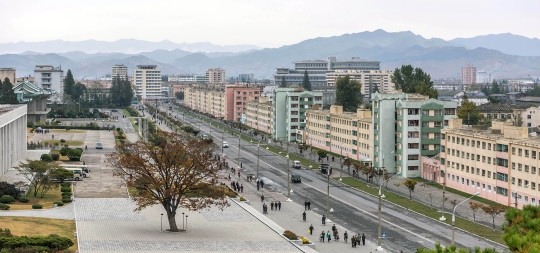
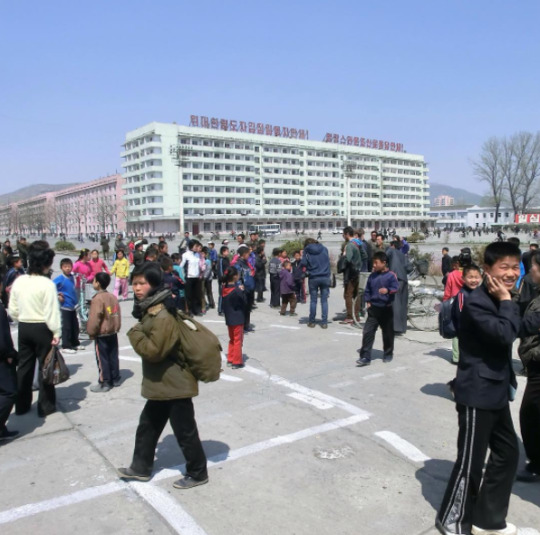
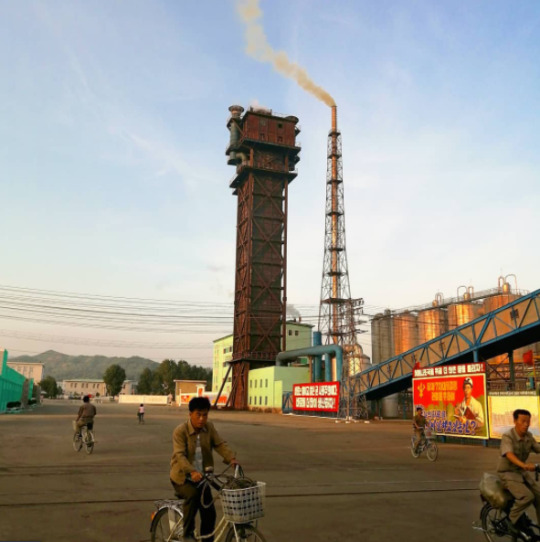
Hamhung's fertilizer plant, the biggest in North Korea.
When the war broke out, Hamhung was home to the largest nitrogen fertilizer plant in Asia. Since its product could be used in the creation of explosives, the existence of the plant is considered to have made Hamhung a target for U.S. aggression (though it's worth repeating that the U.S. carried out saturation bombings of most population centers in the country, irrespective of any so-called 'military value').
The plant was immediately rebuilt after the war, and—beyond its practical use—serves now as a monument of resistance to U.S. imperialism, and as a functional and symbolic site of self-reliance.
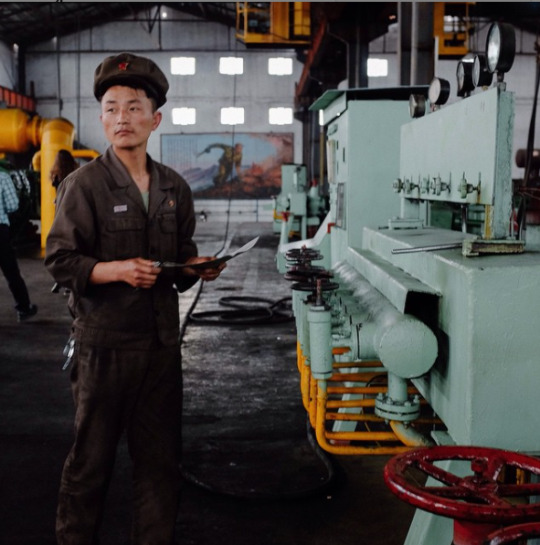
Chongjin, the third largest city in the DPRK.
Another coastal city and industrial hub. It underwent a massive development prior to the Korean war, housing around 300,000 people by the time the war broke out.
By 1953, the U.S. had destroyed most of Chongjin's industry, bombed its harbors, and killed one third of the population.
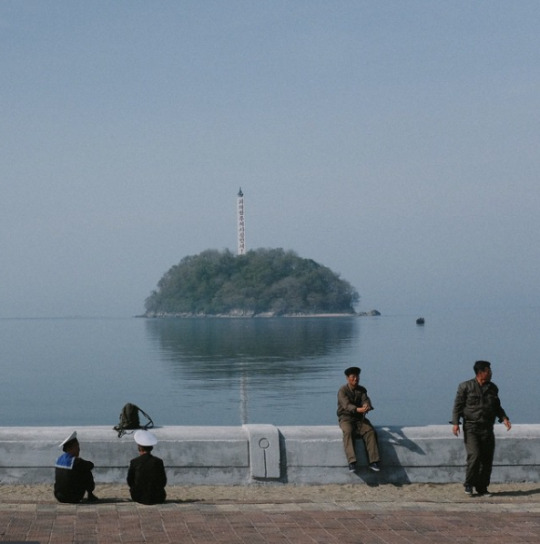


Wonsan, a rebuilt seaside city.
The city of Wonsan is a vital link between the DPRK's east and west coasts, and acts today as both a popular holiday destination for North Koreans, and as a central location for the country's growing tourism industry.
Considered a strategically important location during the war, Wonsan is notable for having endured one of the longest naval blockades in modern history, lasting a total of 861 days.
By the end of the war, the U.S. estimated that they had destroyed around 80% of the city.
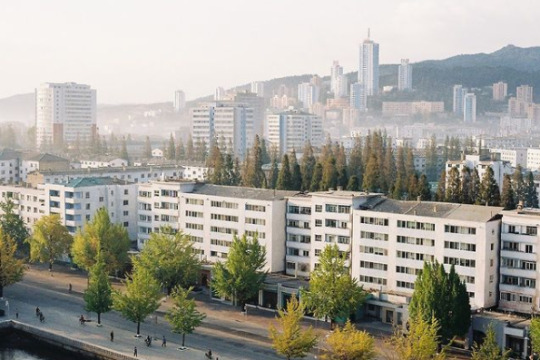
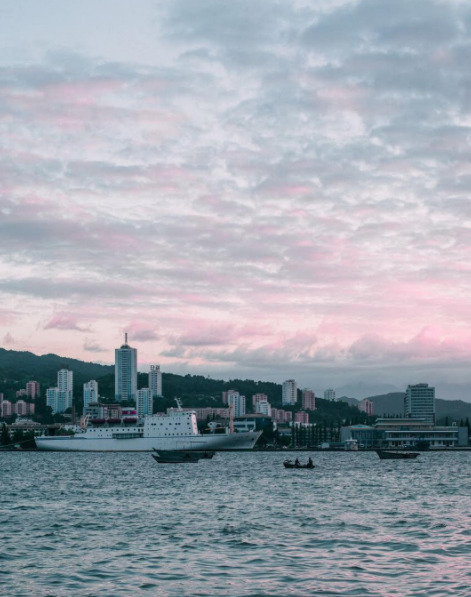
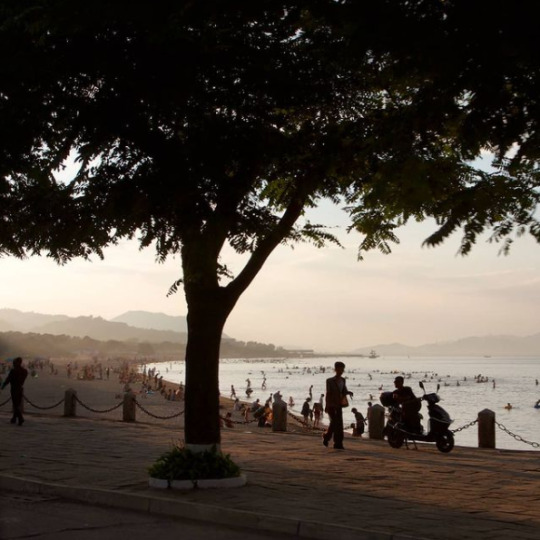
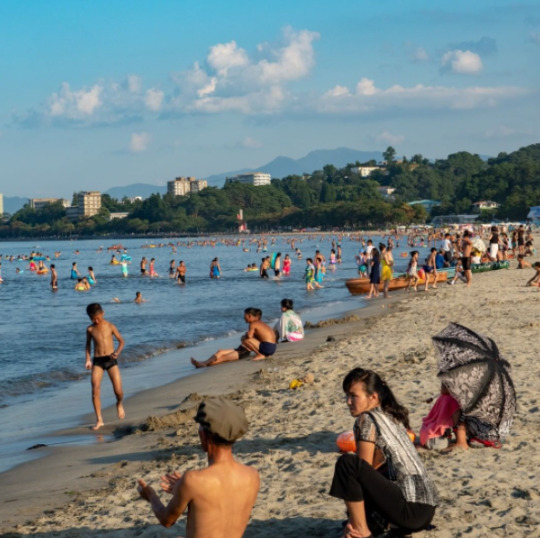
Masikryong Ski Resort, located close to Wonsan. It opened to the public in 2014 and is the first, I believe, that was built with foreign tourists in mind.
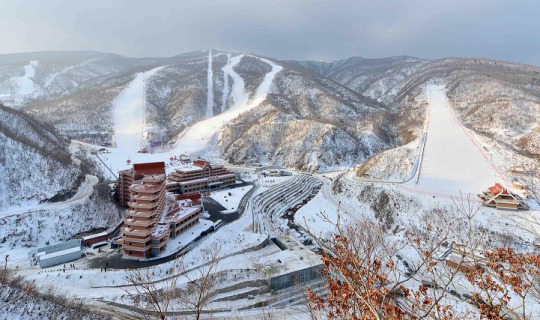
Sariwon, another rebuilt city
One of the worst hit cities during the Korean War, with an estimated destruction level of 95%.
I've written about its Wikipedia page here before, which used to mockingly describe its 'folk customs street'—a project built to preserve old Korean traditions and customs—as an "inaccurate romanticized recreation of an ancient Korean street."
No mention, of course, of the destruction caused by the US-led aerial bombings, or any historical context at all that could possibly even hint at why the preservation of old traditions might be particularly important for the city.
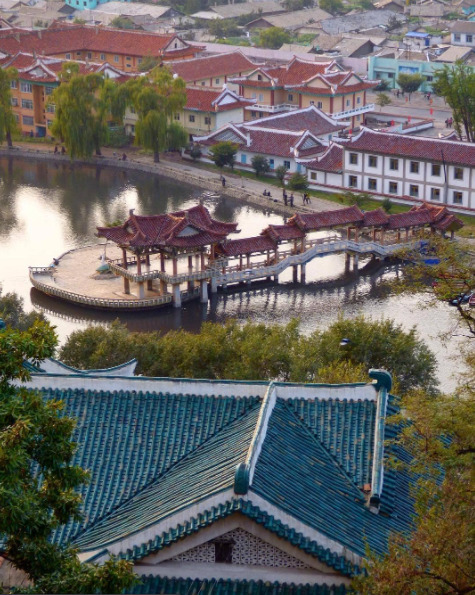

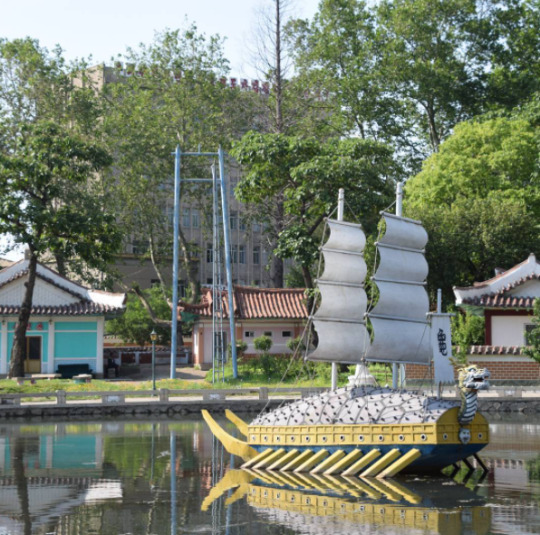
Life outside of the towns and cities
In the rural parts of the DPRK, life primarily revolves around agriculture. As the sanctions they're under make it difficult to acquire fuel, farming in the DPRK relies heavily on manual labour, which again, to avoid food shortages, requires that a large portion of the labour force resides in the countryside.
Unlike what many may think, the reliance on manual labour in farming is a relatively "new" development. Up until the crisis of the 1990s, the DPRK was a highly industrialized nation, with a modernized agricultural system and a high urbanization rate. But, as the access to cheap fuel from the USSR and China disappeared, and the sanctions placed upon them by Western nations heavily restricted their ability to import fuel from other sources, having a fuel-dependent agricultural industry became a recipe for disaster, and required an immediate and brutal restructuring.
For a more detailed breakdown of what lead to the crisis in the 90s, and how it reshaped the DPRKs approach to agriculture, check out this article by Zhun Xu.

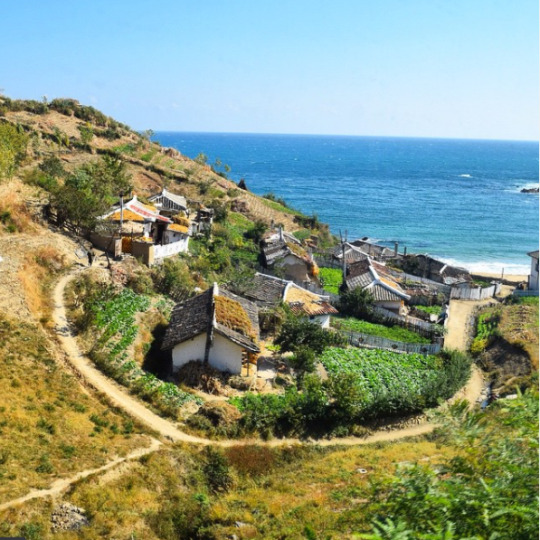
Some typical newly built rural housing, surrounded by farmland.
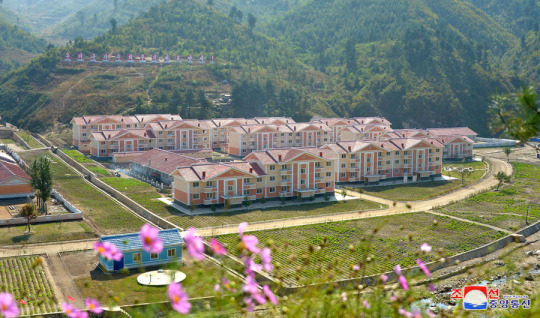
Tumblr only allows 20 pictures per post, but if you want to see more pictures of life outside Pyongyang, check out this imgur album.
#dprk#north korea#i've had this post unfinished in drafts for almost a year#also sorry about the spelling and potential formatting issues it's a nightmare to edit at this point#it was literally just meant to be a collection of picture and then the writing just sort of happened#enjoy the brief heritageposts history lesson i guess
7K notes
·
View notes
Text
" Men in Gaza do cry.
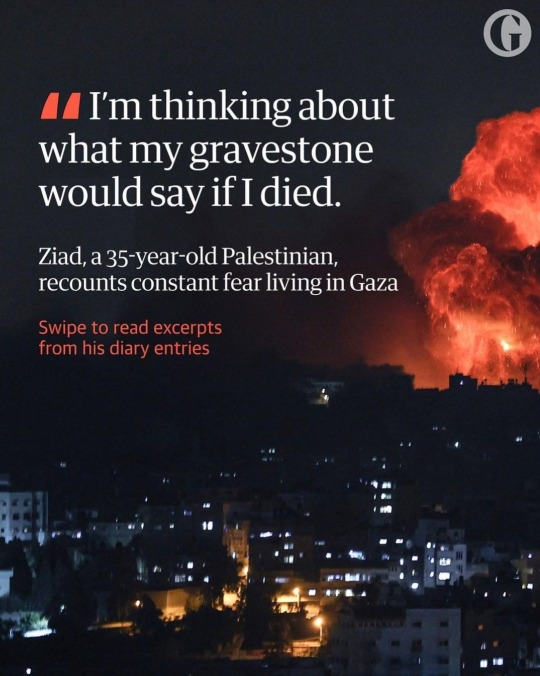
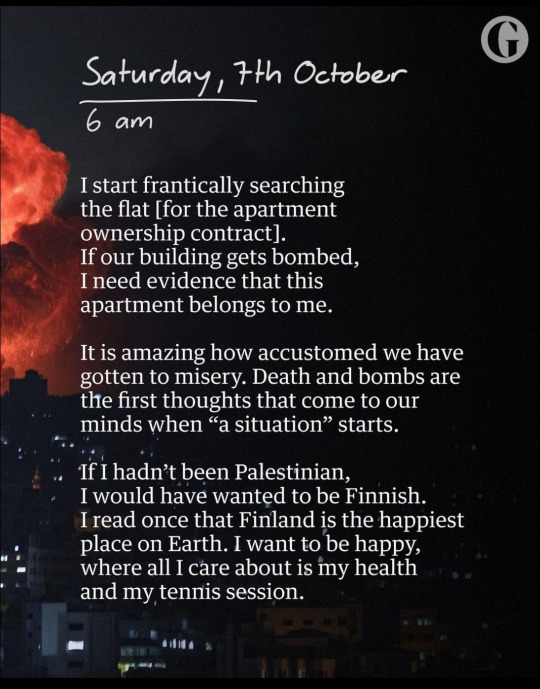
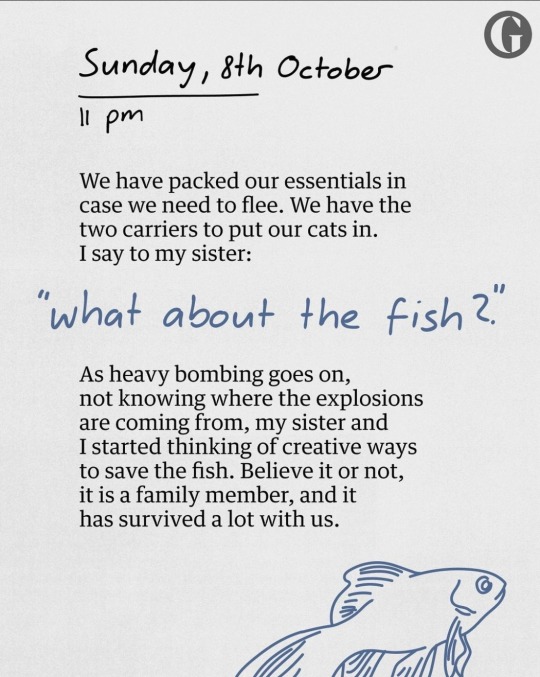
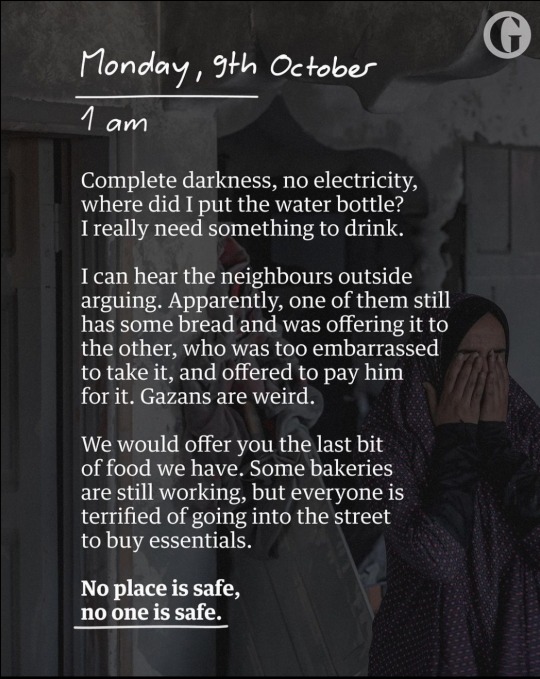
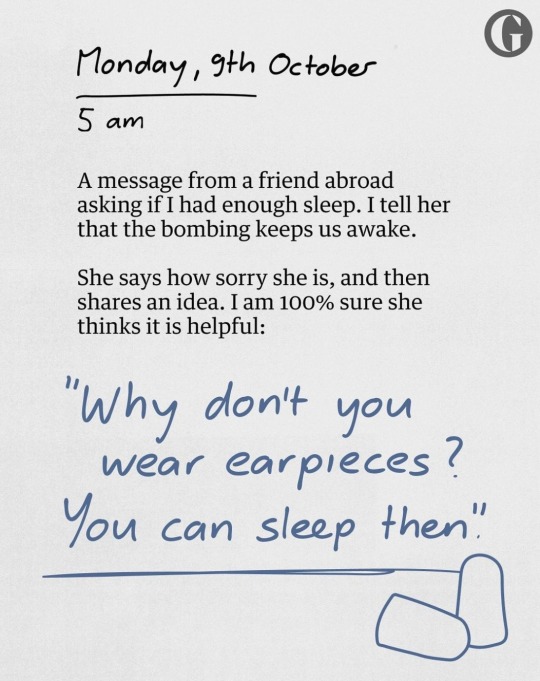
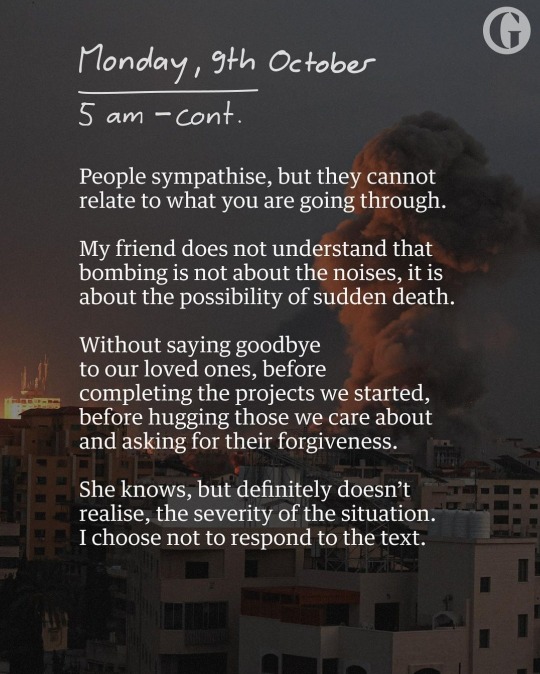
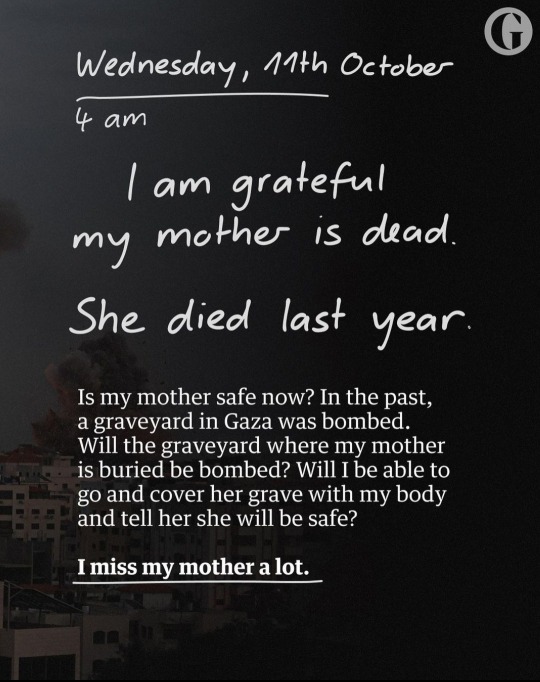
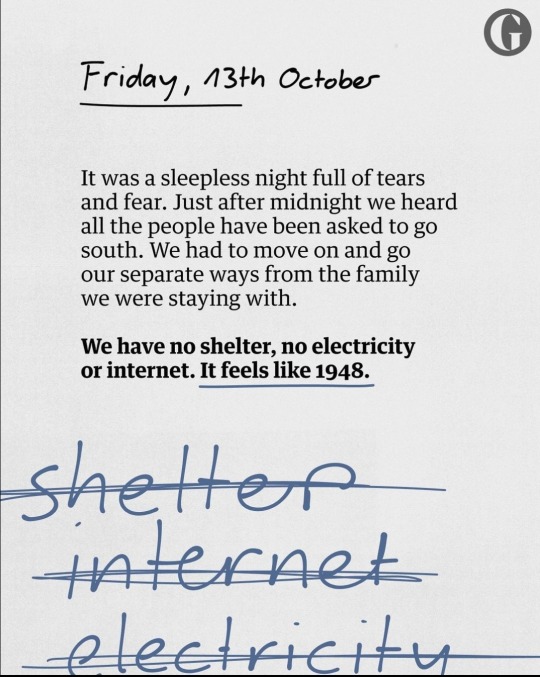
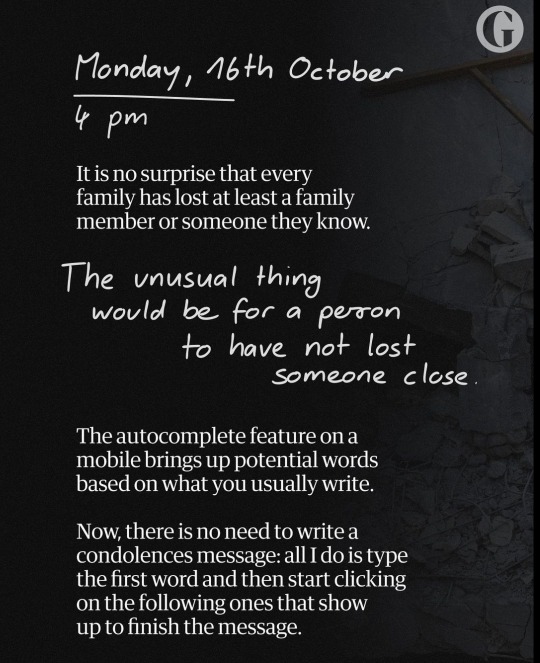

When they lose their homes that they spend their
whole lives building, they cry
When they see their dreams and hopes getting destroyed, they cry.
When they realise how scary and uncertain their future is, they cry.
And because they are human beings, full of feelings and emotions, they cry."
This is an excerpt from a 35-year-old Palestinian's account of life in Gaza under siege.
Ziad has been writing for the Guardian about the realities of the Israeli bombardment, as he, his sister and their pets, flee their home in Gaza City in the hope of survival.
You can read his diary entries in full via the link:
#palestine#free palestine#israel#gaza#free gaza#gaza strip#from the river to the sea palestine will be free#genocide#gazaunderattack#israel terror#we are not numbers#dairy#qoutes#the guardian#art#history#pictures#insta#news#instagram#peace#love#israel is an apartheid state#israel is a terrorist state
16K notes
·
View notes
Text

Cat on a car, October 1958. New York City, Photo by Angelo Rizzuto
#1950s#NYC#cats#Vintage Photo#old photo#sealed in time#historical photo#history photo#photos#history#photography#black and white photography#vintage photography#black and white#black and white photo#history lovers#history in pictures#antique photo#timeless photo
1K notes
·
View notes
Text
GUYS THEYRE MAKING AN OFFICIAL CROSSOVER COMIC. THIS IS NOT A FUCKING DRILL.

ISSUE 13 OF SATURDAY MORNING ADVENTURES DROPPING IN JUNE.
updates below the cut —>
UPDATE #1:
Hiya! since this is blowing up just thought i’d stick this on here. I got this info from a YT community post from teddygamingreview, a smaller channel knee deep in the comics side of the tmnt franchise that i’ve been following for a while. From what i understand this is just teaser/promo material so there’s not a whole lot of other info out yet. Thats all, cowa-fuckin-bunga dudes
UPDATE #2:
TEDDYGAMING REVIEWS CAME IN CLUTCH ONCE AGAIN WITH A BREAKDOWN VIDEO
(Most important new info takeaway that wasn’t already laid out in the previous post, in case you don’t got time to watch right now: the issue after this has some villains from the 2012 series on the cover art, implying that whatever multiverse crossover shenanigans are going on might bleed into he next issue, at least to some extent?)
youtube
UPDATE #3:
THIS ONES TOO BIG SO I MADE A SEPARATE POST FOR IT, LINK HERE:
#source: teddygamingreview#HOLY FUCKING SHIT#THIS IS A MOMENT IN HISTORY#TAKE A PICTURE#tmnt#tmnt 2003#2k3 tmnt#tmnt 2012#tmnt idw#mirage tmnt#tmnt 1987#rottmnt#rise of the teenage mutant ninja turtles#teenage mutant ninja turtles#tmnt crossover#thoughts from the pit#Youtube
7K notes
·
View notes
Text

Photos of a neighborhood cat by Woody Guthrie, NYC, 1947
#PLEASEE PLEAZE IM DYING IM DYING IM DYING#THIS IS SO CUTE IM GOINF TO CRY YOU NEED TO LOOK AT THESE PICTURES#woody guthrie#photos#40s#1940s#wholesome#cat#old photo#cat photos#old cat photos#aesthetic#history#photography#folk
2K notes
·
View notes
Text

somebody had probably done this before but
#dark academia#romanticism#realism#the secret history#frankenstein#the picture of dorian gray#henry winter#dr frankenstein#lord henry wotton#oscar wilde#mary shelley#donna tartt
3K notes
·
View notes
Text
The Intelligence of Tradition in Rajput Court Painting :: Molly Emma Aitken

View On WordPress
#978-0-3001-4229-7#art asia#art india#books by molly emma aitken#first edition books#historic paintings#historical paintings#history drawing#history painting#history pictures#indian art#indic art#leslie fitch#miniature artists#miniature painters#miniature painting#rajasthan paintings#rajput painting#south asian art
1 note
·
View note
Text

The most dangerous duel of all.
#wizard#'OP what is this?' Well this is the result of a combination of several status effects upon my psyche.#Most importantly; this is what happens when you're doodling something and go 'what if I made this sillier?'#So you do. And then you have the cowboy wizards.#All I am saying is that both cowboy and wizard are known for their hats and duels. This was a natural conclusion.#You take a cowboy and a wizard and you get a ...oh.#Well you get 'Coward'.#'Wizboy' is not any better. I love the combo of cowboy and wizard but dear god there is no good name combo to be found.#Maybe that's why they are so angry.#Screw it. One of these silly beans is a Coward and the other is a Wizboy.#Their families have a long and antagonistic history and pictured here is a fateful chance meeting...and duel to the death.#100 days of hat to hat combat.
597 notes
·
View notes
Text










Photos of people in the Victorian era goofing around
#history#humanity#history funny#history facts#history pictures#beautiful photos#old photos#photography#victorian#goofing around#humans being humans
39 notes
·
View notes
Text
Listen, you can’t be partners in crime and also be just “Best Friends”cause there is nothing more gay than planning murder
#Saying no homo after you just killed a man with your “friend” does not get rid of the fact that it was as gay as hell#the secret history#if we were villains#scream franchise#billy loomis#stu macher#maraduers#rosekiller#barty crouch jr#evan rosier#dorian gray#the picture of dorian gray#basil hallward#vicious ve schwab#eli ever#victor vale#fear street#cindy berman#Alice fear street#ghostface#victor frankenstein#lgbtq#lgbtqia#be gay do crimes#Gay#dark academia#billy x stu#evervale
2K notes
·
View notes
Text
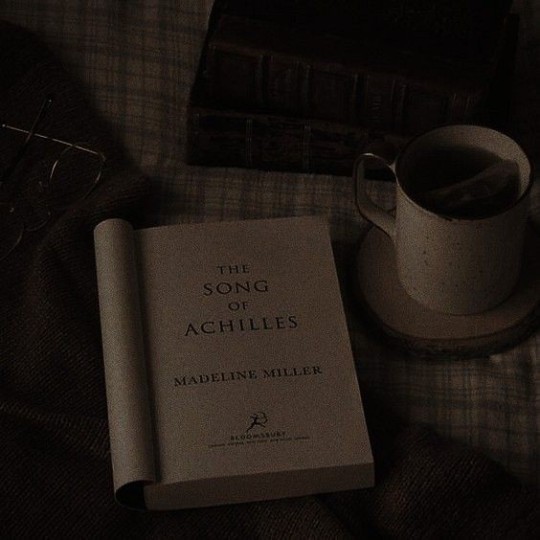

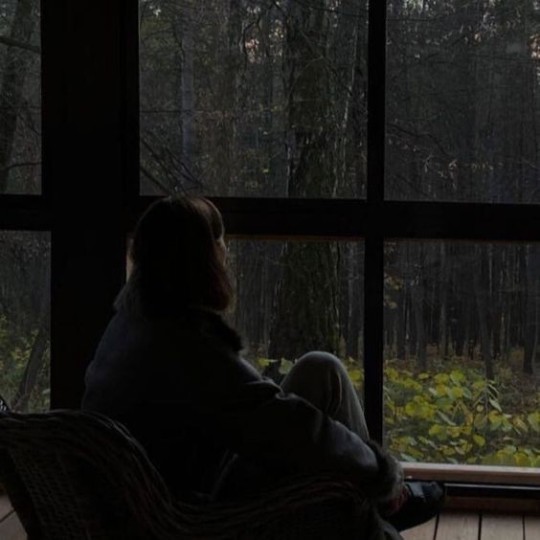

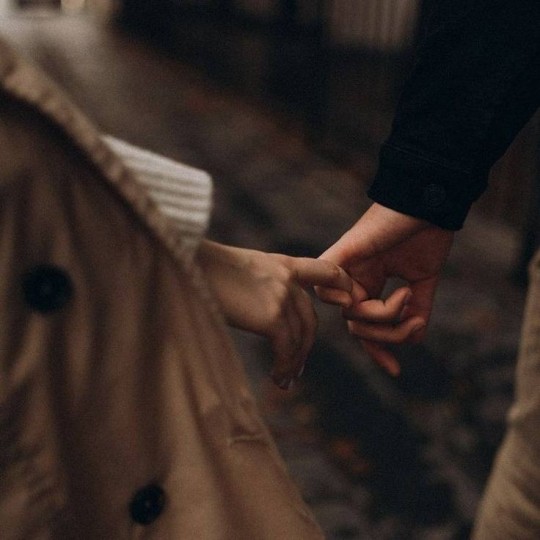
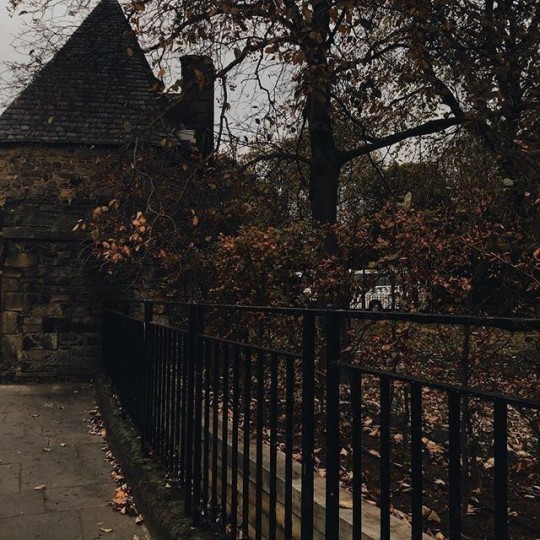
Death whispered,"I'll love you more than life ever can."
Picture Credit ~📍 pinterest
@luciferslilith7
#aesthetic#dark academia#chaotic academia#spilled ink#spilled thoughts#classic academia#academia#light academia#classic literature#dark and darker#dark and moody#dark and beautiful#black & brown#dark academia moodboard#my academia#dark Academia aesthetic#escapism#dead poets society#the secret history#the picture of dorian gray#the goldfinch#if we were villains#sylvia plath#fydor dostoevsky#franz kafka#books and poetry#books and coffee#self qoute#writeblr#autumn aesthetic
4K notes
·
View notes
Text
they want to talk about mental illness and acceptance and how everyone is a little ocd it's cute and quirky and their "intrusive thoughts" are about cutting their hair off and you say yours are about taking a razorblade to your eye and they say ew can you not and everyone is a little adhd sometimes! except if you're late it's a personality flaw and it's because you are careless and cruel (and someone else with adhd mentions they can be on time, so why can't you?) and it's not an eating disorder if it's girl dinner! it's not mania if it's girl math! what do you mean you blew all of your savings on nonrefundable plane tickets for a plane you didn't even end up taking. what do you mean that you are afraid of eating. get over it. they roll their little lips up into a sneer. can you not, like, trauma dump?
they love it on them they like to wear pieces of your suffering like jewels so that it hangs off their tongue in rapiers. they are allowed to arm-chair diagnose and cherrypick their poisons but you can't ever miss too many showers because that's, like, "fuckken gross?" so anyone mean is a narcissist. so anyone with visual tics is clearly faking it and is so cringe. but they get to scream and hit customer service employees because well, i got overwhelmed.
you keep seeing these posts about how people pleasers are "inherently manipulative" and how it's totally unfair behavior. but you are a people pleaser, you have an ingrained fawn response. in the comments, you have typed and deleted the words just because it is technically true does not make it an empathetic or kind reading of the reaction about one million times. it is technically accurate, after all. you think of catholic guilt, how sometimes you feel bad when doing a good deed because the sense of pride you get from acting kind - that pride is a sin. the word "manipulation" is not without bias or stigma attached to it. many people with the fawn response are direct victims of someone who was malignantly manipulative. calling the victims manipulative too is an unfair and unkind reading of the situation. it would be better and more empathetic to say it is safety-seeking or connection-seeking behavior. yes, it can be toxic. no, in general it is not intended to be toxic. there is no reason to make mentally ill people feel worse for what we undergo.
you type why is everyone so quick to turn on someone showing clear signs of trauma but you already know the fucking answer, so what's the point of bothering. you kind of hate those this is what anxiety looks like! infographics because at this point you're so good at white-knuckling through a severe panic attack that people just think you're stoic. even people who know the situation sometimes comment you just don't seem depressed. and you're not a 9 year old white kid so there's no way you're on the spectrum, you're not obsessed with trains and you were never a good mathematician. okay then.
mental illness is trending. in 2012 tumblr said don't romanticize our symptoms but to be fair tiktok didn't exist yet. there's these series of videos where someone pretends to be "the most boring person on earth" and is just being a normal fucking person, which makes your skin crawl, because that probably means you are boring. your friend reads aloud a profile from tinder - no depressed bitches i fucking hate that mental illness crap. your father says that medication never actually works.
you still haven't told your grandmother that you're in therapy. despite everything (and the fact it's helping): you just don't want her to see you differently.
#writeblr#warm up#to be clear let me state again: i think you should id however you fucking want if it helps you seek peace#but there is a HUGE difference between being like '.... im undiagnosed but i think i might be X'#and a person who is like ''omg my intrusive thoughts made me buy a birkin!!!''#babe mine made me throw up bc they disgusted me so much <3#mine made me hurt myself evenly. even when i wanted to stop. i have had to put my hand on the stove MULTIPLE TIMES#and again i'd rather have 10000 people get help for something they don't need help for#than have 1 kid NOT get help#but there has GOTTTTT to be a middle ground here#bc at this point it isn't ''raising awareness''#it's . fucking misinformation. and ''what this picture says about you!!!!!''#& yes! im mostly talkin about ppl who are actually disgusted and offended by signs of mental illness#but use it to defend THEIR actions#like babe you hate when kids start yelling in the walmart? but you YOuRSELF can yell?#you are depressed so it's fine you were cruel to your spouse?#but if your spouse spends too much time in bed she's a lazy fuck?#your partner needs to do everything for you bc of your history in trauma? but when SHE has needs she's being clingy and gross?#HUGE difference here between whom i think most of my followers are btw. like#all it takes is fucking anyyyy empathy or kindness . like.#anyway it's hard to explain im hoping we all know the person im talking about lol
6K notes
·
View notes
Text
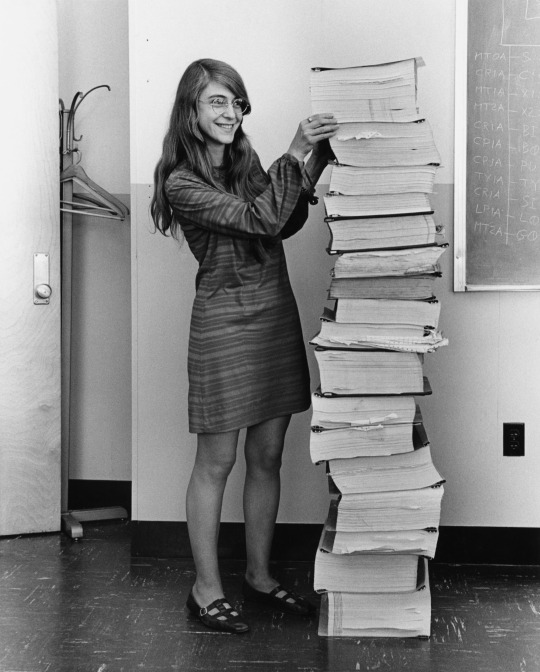
Margaret Hamilton, Director of the Apollo project Software Engineering Division, with a stack of papers containing the code to the Apollo Guidance Computer navigation software. The software that on this day, in 1969, guided Neil Armstrong and Buzz Aldrin when they landed on the Moon.
6K notes
·
View notes